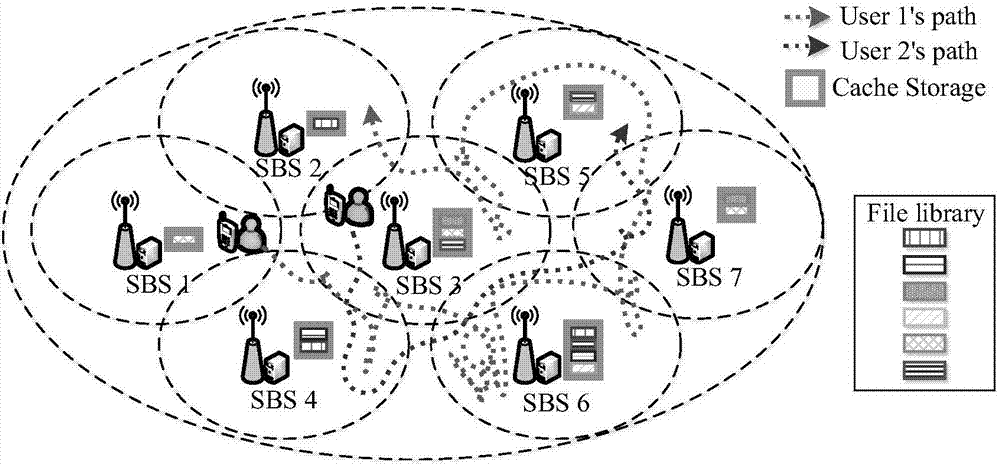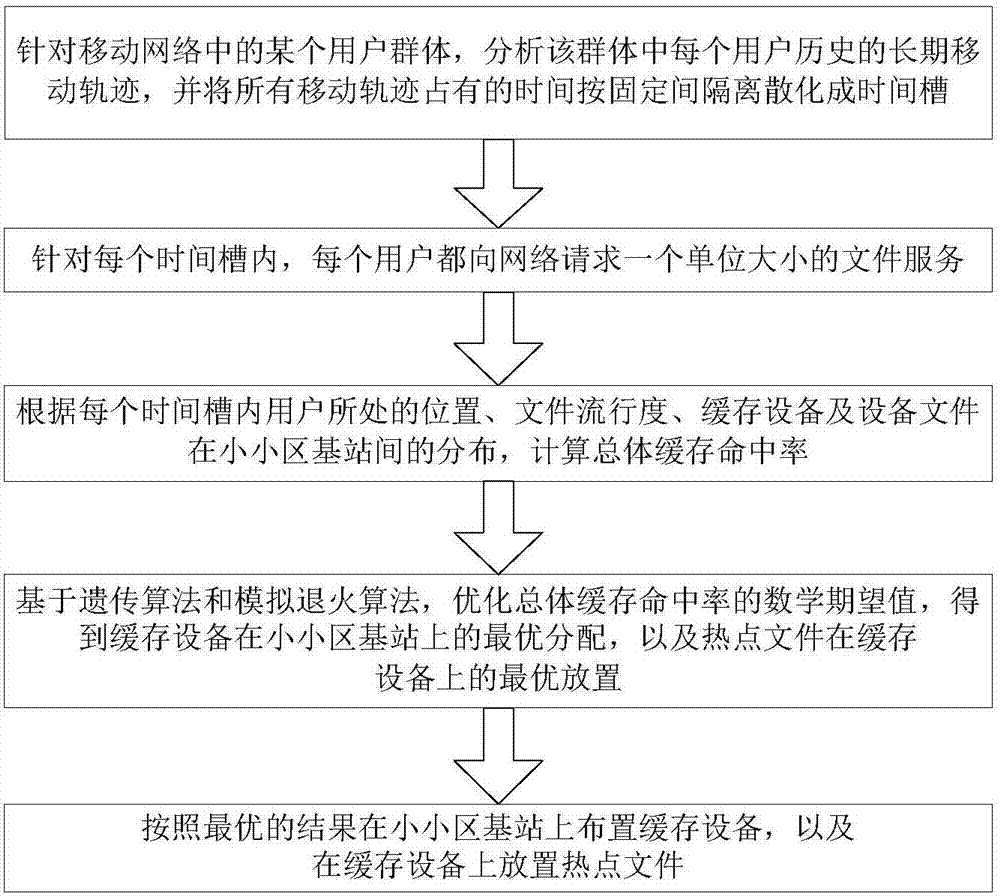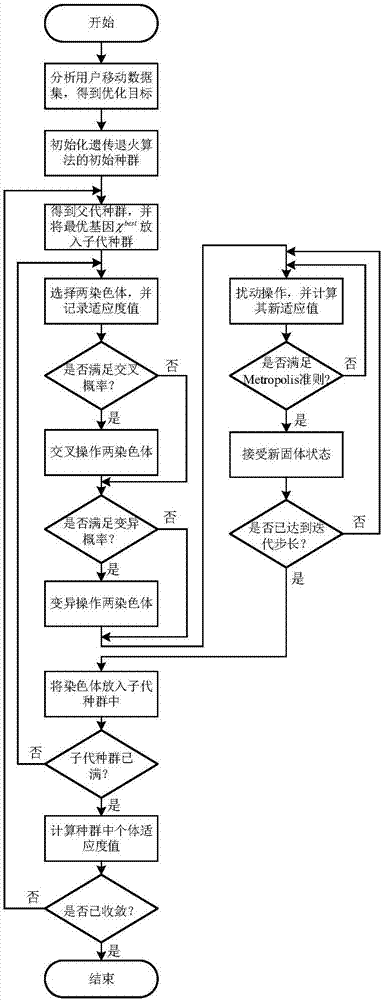Tiny cell cache device allocation algorithm based on user mobility
A caching device and allocation algorithm technology, which is applied in the direction of location information-based services, electrical components, wireless communication, etc., can solve the problem of complex cache device allocation and other problems
- Summary
- Abstract
- Description
- Claims
- Application Information
AI Technical Summary
Problems solved by technology
Method used
Image
Examples
Embodiment
[0151] In this embodiment, the following scenario is considered: using the movement trajectories of 92 experimental users in the Korea Institute of Science and Technology (KAIST) within one month as the source of movement trajectory data. Using the uniformly distributed small cell base station deployment method, the distance between adjacent small cell base stations is set to 40 meters, and the coverage radius of each small cell base station signal is set to 100 meters. The cache device capacity that can be installed in each base station is 5 file units at most. In terms of user file requests, it is assumed that the file popularity conforms to the Zipf distribution with a coefficient of α, and the total number of popular file sets is 100. In addition, in order to analyze the system cache hit rate and total cache capacity CS total Size relationship, define the cache capacity saturation η as the total cache capacity CS total and the number of small cell base stations The rat...
PUM
 Login to View More
Login to View More Abstract
Description
Claims
Application Information
 Login to View More
Login to View More - R&D
- Intellectual Property
- Life Sciences
- Materials
- Tech Scout
- Unparalleled Data Quality
- Higher Quality Content
- 60% Fewer Hallucinations
Browse by: Latest US Patents, China's latest patents, Technical Efficacy Thesaurus, Application Domain, Technology Topic, Popular Technical Reports.
© 2025 PatSnap. All rights reserved.Legal|Privacy policy|Modern Slavery Act Transparency Statement|Sitemap|About US| Contact US: help@patsnap.com



